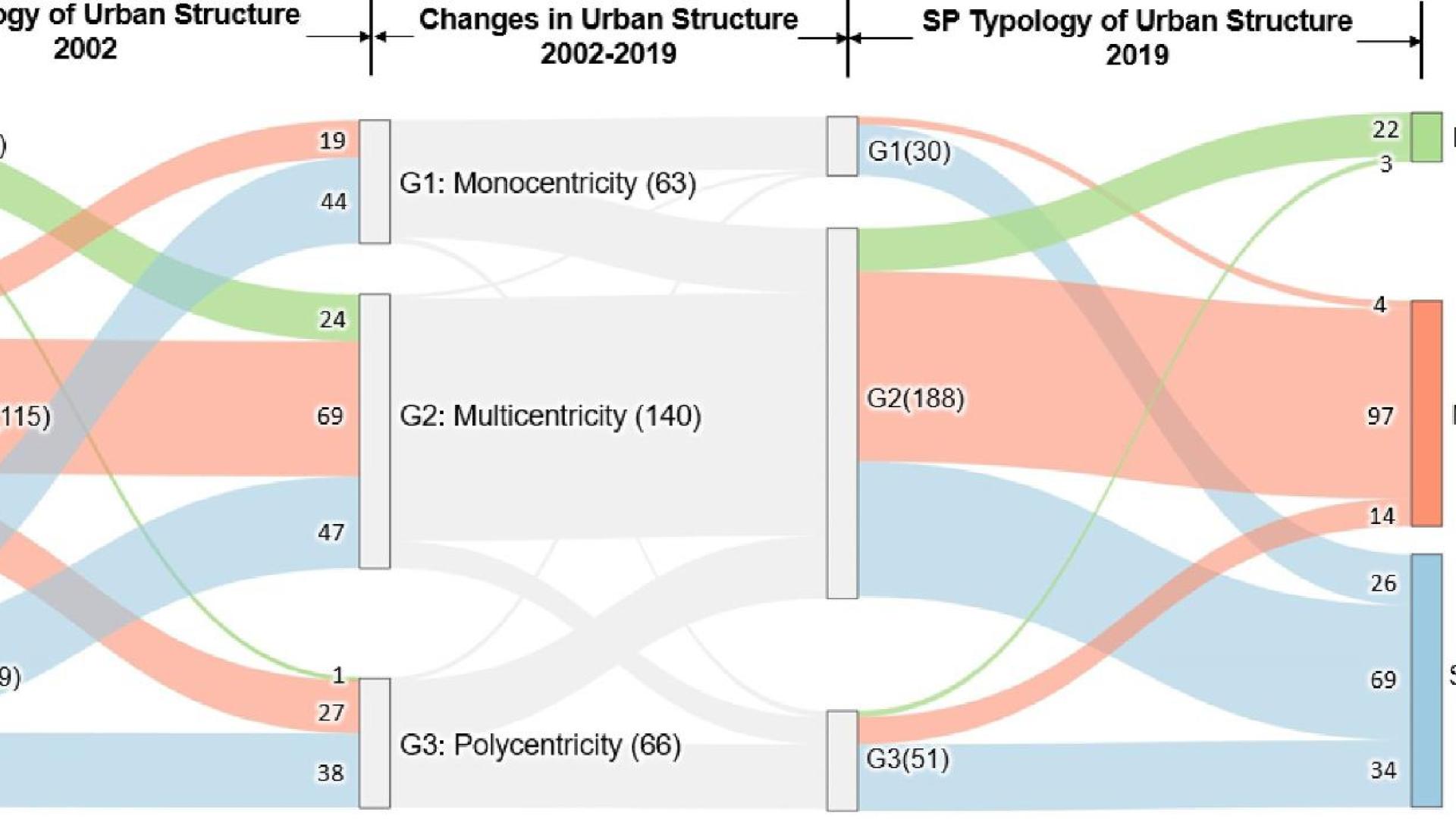← Back to Projects
Regional Polycentricity
A primary focus of the research group in recent years has been to better understand regional polycentricity; how to better measure it, and examining the evolution or development of metropolitan areas toward greater polycentricity.

The Evolution of Polycentricity in Chinese Prefectural Cities.
For example, we examine the spatial‐temporal evolution of urban spatial structure across 269 Chinese prefectural cities from 2002 to 2019. Our analysis identifies a consistent trend toward a more polycentric configuration in the 25 Chinese mega‐cities during this period, primarily due to population growth and a supportive policy environment. However, the evolutionary pathways of small‐ and medium‐sized cities unfolded in a rather complex and diverse manner, with some becoming more polycentric while the majority adhering to a monocentric trajectory (Li, W. and Schmidt, S., 2024).
Related work:
Measurement: Thomas, R., Schmidt, S., and Siedentop, S. (2022). Toward comparative polycentricity scores: Assessing variations in regional delineation and subcenter identification. Environment and Planning B: Urban Analytics and City Science, 49(6), 1597–1611.
Li, W. and Schmidt, S. (2024) The spatial-temporal evolution of urban development patterns in Chinese cities: Dynamics and interpretations, Growth and Change, 55(2)
Schmidt, S., Krehl, A., Fina, S., and Siedentop, S. (2021). Does the monocentric model work in a polycentric urban system? An examination of German metropolitan regions. Urban Studies, 58(8), 1674–1690.


